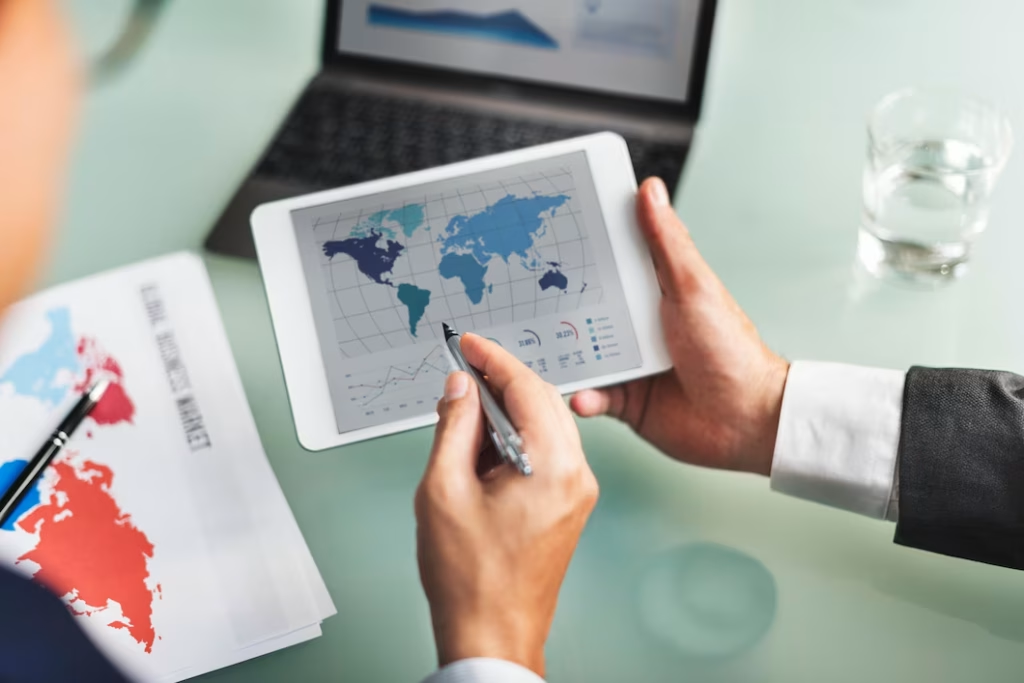
Economic forecasts play a crucial role in shaping business strategies, government policies, and individual financial decisions. These forecasts are based on a combination of historical data, statistical models, and expert insights to predict future economic trends. Whether you’re an investor, policymaker, or business owner, understanding economic forecasts is essential for making informed decisions. This article delves into the significance of economic forecasting, the methods used, key indicators, and how global events shape economic projections. It will also explore the challenges faced by economists in making accurate predictions and provide insights from leading financial institutions.
What Is Economic Forecasting?
Economic forecasting is the process of predicting future economic conditions based on various indicators such as GDP growth, inflation rates, employment levels, and market trends. Economists use different models to make these predictions, including time-series analysis, econometric models, and qualitative assessments. Forecasts can be short-term (covering the next few months or a year) or long-term (spanning multiple years or even decades).
For instance, institutions like the International Monetary Fund (IMF) regularly publish global economic outlooks to help policymakers and businesses navigate uncertainties. You can access the latest IMF economic forecasts here: IMF Economic Outlook. Similarly, the World Bank and the OECD provide valuable insights into economic trends (World Bank Global Economic Prospects).
Key Economic Indicators Used in Forecasting
Several key indicators help economists predict future economic conditions. These include:
- Gross Domestic Product (GDP): Measures the overall economic output of a country and is one of the most critical indicators in economic forecasting. Higher GDP growth indicates a strong economy, while slow or negative growth signals economic trouble. (Learn more about GDP from the U.S. Bureau of Economic Analysis)
- Inflation Rate: Inflation impacts purchasing power and monetary policies. Central banks use inflation forecasts to adjust interest rates accordingly. The Federal Reserve and European Central Bank monitor inflation closely (Federal Reserve Inflation Analysis).
- Unemployment Rate: A low unemployment rate signifies a strong labor market, while rising unemployment can indicate economic downturns. (Check U.S. labor statistics here)
- Consumer Confidence Index (CCI): Measures the optimism of consumers about economic conditions. A high CCI often translates into increased spending and economic growth. (Explore CCI reports by The Conference Board)
- Stock Market Trends: The performance of major stock indices like the S&P 500, Dow Jones, and NASDAQ provides insights into investor sentiment and future economic conditions. (Track stock market performance on Bloomberg)
- Interest Rates: Set by central banks, interest rates impact borrowing, investments, and overall economic activity. (Latest interest rate policies from the ECB)
Types of Economic Forecasting Methods
Economists rely on different methods to generate accurate economic forecasts. Some of the most common approaches include:
- Qualitative Methods: These involve expert opinions, surveys, and historical trends to predict economic outcomes. They are often used for short-term forecasting. (Read about qualitative forecasting in Harvard Business Review)
- Quantitative Methods: These include statistical and econometric models that use past data to predict future trends. Time-series analysis and regression models are widely used. (Learn about econometric models from the NBER)
- Leading and Lagging Indicators: Leading indicators (e.g., stock market trends, new business orders) help predict economic direction, while lagging indicators (e.g., unemployment rates) confirm trends. (Explore leading indicators by OECD)
- Machine Learning & AI in Economic Forecasting: With advancements in artificial intelligence, many institutions now use machine learning algorithms to improve forecasting accuracy. AI-driven models analyze vast datasets to detect patterns and predict future economic trends. (Read about AI in economics from MIT Technology Review)
How Global Events Impact Economic Forecasts
Economic forecasts are not static; they evolve based on global events. Some key factors that influence economic projections include:
- Pandemics & Health Crises: The COVID-19 pandemic drastically changed global economic forecasts, leading to recessions, shifts in labor markets, and changes in consumer behavior. (World Bank’s COVID-19 economic impact analysis)
- Geopolitical Tensions & Wars: Conflicts like the Russia-Ukraine war have disrupted supply chains, increased inflation, and impacted energy markets. (Read IMF analysis on geopolitical risks)
- Technological Advancements: Innovations in AI, blockchain, and automation are shaping future economies by altering job markets and production processes. (McKinsey Global Institute report on AI and the economy)
- Climate Change & Natural Disasters: Extreme weather events can disrupt agriculture, infrastructure, and economic stability, leading to revised forecasts. (UN Climate Change economic impact reports)
- Monetary Policy Changes: Interest rate hikes or cuts by central banks significantly impact economic projections, influencing inflation and investment trends. (Latest Fed policy announcements)
Challenges in Economic Forecasting
Despite advancements in data analytics and technology, economic forecasting is inherently uncertain. Some common challenges include:
- Unpredictable External Shocks: Natural disasters, pandemics, or sudden geopolitical conflicts can disrupt even the most reliable economic models.
- Data Limitations: Economic data is often revised, leading to potential inaccuracies in forecasting models.
- Human Bias & Assumptions: Many models rely on assumptions that may not always hold true, especially during unexpected global shifts.
- Market Volatility: Stock market fluctuations can rapidly alter economic expectations, making long-term forecasts difficult.
FAQs on Economic Forecasts
1. Why are economic forecasts important?
Economic forecasts help businesses plan investments, governments make policy decisions, and individuals manage finances. They provide insights into potential economic risks and opportunities.
2. How accurate are economic forecasts?
Forecasts are based on data and models but are subject to change due to unforeseen events. While short-term forecasts tend to be more accurate, long-term predictions have higher uncertainties.
3. Who publishes the most reliable economic forecasts?
Institutions like the IMF, World Bank, Federal Reserve, and OECD provide some of the most comprehensive and reliable economic forecasts.
4. What is the role of AI in economic forecasting?
AI helps analyze large datasets, identify patterns, and improve the accuracy of forecasts by reducing human biases and errors.
5. How do interest rates impact economic forecasts?
Interest rates influence borrowing, investments, and inflation. Higher interest rates can slow down economic growth, while lower rates can boost spending and investments.
Conclusion: The Evolving Nature of Economic Forecasts
Economic forecasting is an essential tool for decision-making at all levels of society. From businesses planning their next moves to governments shaping monetary policies, accurate economic predictions help in preparing for future challenges. However, forecasting is not an exact science; it depends on constantly changing variables such as global events, technological shifts, and market fluctuations. Despite these uncertainties, the use of advanced data analytics, AI, and machine learning is improving forecast accuracy. As the world becomes increasingly interconnected, the importance of understanding economic forecasts will continue to grow. Staying informed through reliable sources such as the IMF, World Bank, and Federal Reserve can help individuals and organizations navigate economic uncertainties with confidence.
